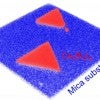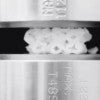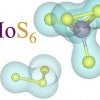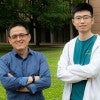People, papers and presentations for Aug. 16, 2021
August 16, 2021
The Baker Institute for Public Policy’s Kelsey Norman, fellow for the Middle East and director of the Women’s Rights, Human Rights and Refugees Program, has been awarded the 2021 Emerging Scholars Policy Prize
Odds are good for unique 2D compound
July 20, 2021
Rice University engineers make 2D materials for valleytronics, a platform for information processing and storage that relies on the manipulation of electrons’ positions in energetic “valleys.”
Six Rice-TMC research teams earn seed grants
June 28, 2021
Rice's Educational and Research Initiatives for Collaborative Health has announced six seed grants for research collaborations between faculty from Rice and the Texas Medical Center.
Solar energy collectors grown from seeds
June 21, 2021
Rice University engineers have created microscopic seeds for growing remarkably uniform 2D perovskite crystals that are both stable and highly efficient at harvesting electricity from sunlight.
‘Flashed’ nanodiamonds are just a phase
June 21, 2021
The “flash” process developed at Rice University can turn carbon black into functionalized nanodiamond and other materials. The carbon atoms evolved through several phases depending on the length of the flash.
Sickle cell advance incorporates Rice lab's tech
June 16, 2021
Rice University bioengineer Gang Bao, a pioneer in the search for a way to treat and perhaps cure sickle cell disease, is co-author of a significant step forward revealed in Science Translational Medicine and led by his colleagues at Stanford University.
Rice lab peers inside 2D crystal synthesis
June 11, 2021
Scientific studies describing the most basic processes often have the greatest impact in the long run. A new work by Rice University engineers could be one such, and it’s a gas, gas, gas for nanomaterials.
Neural nets used to rethink material design
April 30, 2021
The microscopic structures and properties of materials are intimately linked, and customizing them is a challenge. Rice University engineers are determined to simplify the process through machine learning.
Rice names architect for new engineering and science building
April 27, 2021
With the imminent demolition of Rice University’s Abercrombie Engineering Laboratory, the space will soon be cleared for a new engineering and science building, according to Rice administrators.
International architecture firm Skidmore, Owings & Merrill (SOM) has been selected as lead architect for the new building. Houston’s Scientia Architects will consult on laboratory design.















